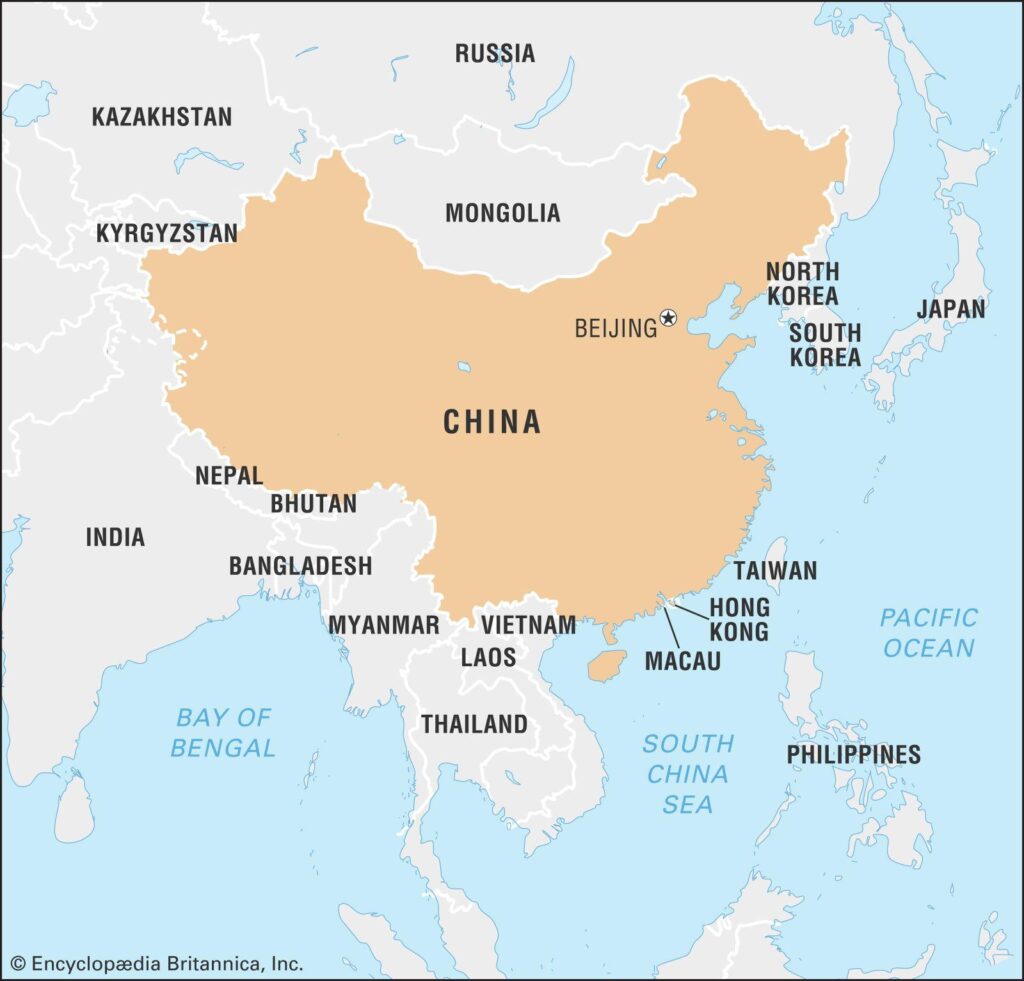The Mongol Empire was the largest contiguous land empire in history, stretching from the Pacific Ocean in the east to Central Europe and the Middle East in the west. At its peak, it covered approximately 9.27 million square miles, an expanse larger than the Roman Empire and the conquests of Alexander the Great combined. This vast empire was forged through a series of ruthless yet highly strategic military campaigns led by one of the most legendary figures in world history—Genghis Khan.
Born as Temujin in the harsh steppes of Mongolia, Genghis Khan overcame immense personal hardships to unite the nomadic tribes of the region. His leadership transformed these scattered warrior clans into an unstoppable military force. Through superior tactics, discipline, and adaptability, the Mongol hordes swept across China, Persia, Russia, and parts of Europe, leaving a lasting mark on global history.

Why Genghis Khan is One of History’s Most Influential Figures
Genghis Khan was not just a conqueror—he was a visionary leader who redefined governance, warfare, and trade. His influence can still be felt today in multiple ways:
Military Strategy & Innovation – The Mongols revolutionized warfare, introducing tactics such as feigned retreats, psychological warfare, and rapid cavalry movements that are studied even in modern military academies.
Political & Administrative Reforms – The Mongol Empire established a meritocratic system, promoting individuals based on talent rather than birthright. Genghis Khan also implemented the Yassa, a legal code that enforced strict discipline and unity.
Global Trade & Connectivity – The Mongols played a crucial role in developing the Silk Road, linking Asia, the Middle East, and Europe, which facilitated cultural and economic exchanges.
Religious Tolerance & Diplomacy – Unlike many empires of his time, Genghis Khan allowed religious freedom, integrating diverse populations under Mongol rule without enforcing a singular belief system.
Despite his brutal military campaigns, his policies led to a period of unprecedented global exchange, fostering the movement of goods, ideas, and technologies across continents.
How the Mongol Conquests Shaped the Modern World
The Mongol Empire’s impact extended far beyond the battlefield:
China: The Mongols established the Yuan Dynasty (1271–1368), influencing Chinese politics, administration, and culture.
Europe: Mongol invasions reshaped medieval European warfare, forcing rulers to rethink military strategies and fortifications.
The Middle East: The conquest of Persia and the destruction of Baghdad in 1258 marked a turning point in Islamic history, disrupting the Islamic Golden Age but also spreading Mongol governance techniques.
Russia: Mongol rule under the Golden Horde influenced Russian governance, taxation systems, and military organization.
Though the Mongol Empire eventually fragmented and collapsed, its influence continued to shape global history for centuries. The empire’s legacy can be seen in modern diplomacy, military doctrine, and even the genetic footprint of Genghis Khan, with studies suggesting that his lineage survives in millions of people today.

Overview of the Article
This article will delve into:
The Rise of Genghis Khan – His early struggles, leadership skills, and the unification of the Mongol tribes.
The Expansion of the Mongol Empire – Major conquests across China, Persia, the Middle East, and Europe.
Mongol Military & Administration – Innovations in warfare, governance, and global trade.
The Decline of the Empire – The division of Mongol territories, failed invasions, and internal conflicts.
The Lasting Legacy – How Mongol influence continues to shape modern geopolitics, trade, and culture.
Part 1: The Early Life of Genghis Khan
Genghis Khan, originally named Temujin, was born into a world of violence, survival, and tribal warfare. His rise from an outcast to the leader of the largest empire in history is one of the most remarkable success stories of all time. The harsh conditions of the Mongolian steppes and the betrayals he faced in his youth shaped his character, turning him into a leader who would unite the scattered Mongol tribes and change the course of world history.
1.1 Birth and Early Struggles
Born as Temujin in 1162
Temujin was born in 1162 near the Onon River in what is now Mongolia. His birth coincided with a time of great instability. The Mongolian steppe was home to numerous nomadic tribes, constantly warring for resources, land, and dominance. Power shifted frequently between clans, and alliances were made and broken with little warning.
According to Mongol legend, Temujin was born clutching a blood clot in his fist, a sign that he was destined for greatness. His father, Yesugei, was a respected leader of the Borjigin clan and a descendant of Borte Chino, a mythical wolf figure believed to be the ancestor of the Mongols.

His mother, Hoelun, was a strong and resourceful woman whose influence would be crucial in shaping Temujin’s character.
At an early age, Temujin’s father arranged his marriage to a girl named Borte from the Onggirat tribe. However, before Temujin could establish himself, tragedy struck.
Father’s Assassination and the Family’s Struggles
When Temujin was nine years old, his father, Yesugei, was poisoned by the Tatar tribe during a feast. With his father dead, Temujin and his family were left vulnerable. Mongol society was ruthless, and without a strong male leader, their clan abandoned them.
Hoelun and her children were cast out, forced to survive alone in the harsh wilderness. With no livestock or protection, they lived by hunting small animals and scavenging food. Temujin and his brothers learned to fend for themselves, forging a deep resilience that would later define his leadership.
During this period, Temujin’s older half-brother, Begter, attempted to assert control over the family. Seeing him as a threat, Temujin and his younger brother, Khasar, killed Begter. This act of defiance marked the beginning of Temujin’s unyielding will to power.
Survival in the Harsh Mongolian Steppes
The Mongolian steppe was an unforgiving environment. Winters were brutal, and summers were scorching. Nomadic tribes survived through herding, hunting, and raiding.
Temujin grew up in this lawless world, where only the strongest could survive. Despite his hardships, he never gave up on his ambition to reclaim his family’s status. His mother, Hoelun, instilled in him a deep sense of determination, discipline, and loyalty.
One of the most defining moments of his youth came when he was captured by a rival clan, the Tayichi’ud, and enslaved. He was shackled and held prisoner, but through sheer cunning, he escaped with the help of a sympathetic guard. This experience taught him a vital lesson—loyalty could be bought, and alliances could be formed even in the darkest of times.

1.2 Rise to Power
Escaping Captivity and Forming Alliances
After his escape, Temujin knew he could not survive alone. He began seeking allies, realizing that power came not just from strength but also from building trust and rewarding loyalty.
His first and most critical ally was Toghrul, the powerful leader of the Kereit tribe, who had been a blood brother (anda) to Temujin’s father. Toghrul took Temujin under his protection, helping him build a small but loyal following.
Temujin also rekindled his bond with his childhood friend Jamukha, who came from a noble Mongol lineage. The two swore brotherhood (anda) and vowed to support each other. However, this alliance would later turn into a fierce rivalry.
Early Battles and Leadership Skills
Temujin’s first major test came when his wife, Borte, was kidnapped by the Merkits, a rival Mongol tribe. Instead of surrendering to fate, he sought help from Toghrul and his blood brother Jamukha. Together, they launched a raid against the Merkits, rescuing Borte and crushing their enemies.
This victory solidified his reputation as a fearless and strategic warrior. It also demonstrated one of Temujin’s greatest strengths—his ability to unite different factions for a common cause.
Over time, his army grew. Temujin’s leadership was different from other Mongol chiefs:
Merit over Birthright – He promoted warriors based on skill and loyalty, not just noble birth.
Strict Discipline – His troops followed a strict code of conduct, ensuring unity and order.
Loyalty and Reward System – He shared the spoils of war fairly, encouraging his followers to stay loyal.
However, his growing power made enemies. In 1186, Jamukha turned against him, gathering rival Mongol clans to challenge Temujin. This led to the Battle of Dalan Balzhut (1187), where Jamukha initially defeated Temujin. But his brutal execution of captured soldiers—boiling 70 of them alive—horrified many Mongols, leading them to defect to Temujin’s side.
Unification of the Mongol Tribes in 1206
For the next two decades, Temujin waged war against rival clans, eliminating opposition and expanding his influence. His ability to inspire loyalty, forge alliances, and crush his enemies made him the most powerful leader on the Mongolian steppes.
In 1206, after a series of decisive victories, a great assembly (Kurultai) was held, where Mongol leaders officially declared him “Genghis Khan”, meaning “Universal Ruler”. This marked the birth of the Mongol Empire.
With the Mongol tribes now united under his command, Genghis Khan turned his gaze outward, preparing to launch one of the most extraordinary military campaigns in history.
Conclusion
Genghis Khan’s rise from an outcast to the supreme ruler of the Mongols was defined by hardship, strategic brilliance, and an unbreakable will. His early struggles forged him into a leader unlike any other, and his ability to unite warring tribes under a single banner set the stage for the largest empire the world had ever seen.
Part 2: The Expansion of the Mongol Empire
With the Mongol tribes unified under Genghis Khan in 1206, his ambition shifted outward. The vast steppes of Mongolia were no longer enough—he sought to expand his empire across the known world. His campaigns were not just about conquest; they were about reshaping civilization itself. The Mongols introduced new military strategies, psychological warfare, and administrative innovations, making their empire the most dominant force of the 13th century.
Genghis Khan and his successors waged war against powerful civilizations, including China, the Khwarezmian Empire, the Middle East, and Eastern Europe, leaving behind a legacy of destruction, transformation, and unprecedented global connectivity.
2.1 Conquest of Northern China (1206–1215)
Attack on the Jin Dynasty
The Mongols’ first major target was northern China, ruled by the Jin Dynasty (1115–1234). The Jin had long been dominant in the region, controlling vast lands and powerful armies. However, their bureaucratic inefficiency, internal corruption, and reliance on static defenses made them vulnerable to Mongol tactics.
By 1209, Genghis Khan launched his first offensive, targeting Western Xia (Xi Xia), a kingdom allied with the Jin. The Mongols forced Western Xia into submission, securing their western flank before turning against the much larger Jin Dynasty.
Between 1211 and 1215, the Mongols stormed northern China, utilizing their trademark military strategies:
Superior Mobility: The Mongols moved swiftly across difficult terrain, avoiding heavily fortified cities when necessary.
Psychological Warfare: They instilled terror in their enemies by massacring entire cities that resisted.
Adaptation of Siege Tactics: Though traditionally nomadic, the Mongols hired Chinese and Persian engineers to master siege warfare.
Siege of Zhongdu (Beijing) (1213–1215)
The final blow to the Jin Dynasty’s northern stronghold came with the Siege of Zhongdu (modern-day Beijing). The Mongols surrounded the city, cutting off supplies and bombarding its defenses. By 1215, the city fell, leading to widespread slaughter, looting, and destruction.
The Jin court fled south, but their power was shattered. The Mongols did not yet push further, as they had other enemies to deal with, but the conquest of northern China was a crucial turning point that demonstrated Mongol supremacy.
2.2 War Against the Khwarezmian Empire (1219–1221)
The Execution of Mongol Envoys by Shah Ala ad-Din Muhammad
By the late 1210s, Genghis Khan turned westward, seeking trade and diplomacy with the Khwarezmian Empire, a powerful Persian-Islamic state stretching from Iran to Central Asia. In 1218, he sent a delegation to the empire’s ruler, Shah Ala ad-Din Muhammad, proposing peaceful trade.
However, the Shah suspected Mongol intentions and ordered the execution of the envoys, including shaving off their heads and sending them back as a message. This act enraged Genghis Khan, who viewed it as the ultimate betrayal. He swore vengeance and prepared for one of the most devastating invasions in history.
Genghis Khan’s Devastating Invasion (1219–1221)
The Mongols invaded Khwarezmia with 200,000 warriors, executing a perfectly coordinated attack. The invasion followed a three-pronged strategy:
Rapid Shock Attacks: The Mongols overwhelmed Khwarezmian border defenses with lightning-fast raids.
Multiple Fronts: They attacked from different directions, confusing and exhausting the defenders.
Divide and Destroy: The Mongols prevented the Shah from regrouping, attacking key cities simultaneously.
The Brutal Destruction of Cities Like Samarkand and Bukhara
The Mongols crushed every city in their path, burning, massacring, and annihilating entire populations.
Bukhara (1220): Genghis Khan took the city in a matter of days, telling its citizens: “I am the flail of God. If you had not committed great sins, God would not have sent a punishment like me upon you.” The city was burned to the ground, and survivors were enslaved or executed.
Samarkand (1220): A jewel of Islamic civilization, Samarkand resisted briefly before falling. Tens of thousands were killed, and Mongol forces destroyed its wealth and infrastructure.
Urgench (1221): The Mongols leveled the city, killing nearly 1.2 million people according to some sources—one of the deadliest massacres in history.
By 1221, the Khwarezmian Empire ceased to exist, and the Shah fled in disgrace, eventually dying on a remote island. The Mongols had demonstrated their unparalleled military might, sending shockwaves across the Islamic world and Europe.

2.3 Invasions of the Middle East and Europe (1220s–1240s)
Mongol Conquests Reaching the Caspian Sea and Russia
After defeating the Khwarezmian Empire, Genghis Khan sent Subutai and Jebe, two of his greatest generals, on a mission of exploration and conquest. Their campaign took them across the Caucasus Mountains, Persia, and into Russia, devastating kingdoms along the way.
In 1223, they defeated a coalition of Russian princes at the Battle of the Kalka River, proving Mongol dominance over the Kievan Rus’. However, the Mongols did not stay, as they were recalled by Genghis Khan to prepare for his next campaigns.
Battles Against Kievan Rus’ and the Hungarian Kingdom (1237–1241)
Following Genghis Khan’s death in 1227, his successors continued expanding the empire. His grandson, Batu Khan, led the Golden Horde into Russia and Eastern Europe.
Kievan Rus’ (1237–1240): The Mongols razed Moscow, Vladimir, and Kyiv, establishing control over Russian lands.
Hungary & Poland (1241): The Mongols crushed European forces at the Battle of Legnica and the Battle of Mohi, nearly destroying the Kingdom of Hungary.
Europe was defenseless, but the Mongols withdrew suddenly in 1242, likely due to internal power struggles after the death of Ögedei Khan.
Devastation of Baghdad (1258) Under Hulagu Khan
One of the most defining Mongol conquests was the destruction of Baghdad in 1258 under Hulagu Khan, another grandson of Genghis Khan.
Baghdad was the cultural and intellectual heart of the Islamic world, home to the House of Wisdom and one of the greatest libraries in history. The Mongols stormed the city, killing over 200,000 inhabitants, burning libraries, and throwing books into the Tigris River, turning its waters black with ink.
This marked the end of the Islamic Golden Age, forever changing the course of Middle Eastern history.
Part 3: The Mongol Military and Administration (1,500–2,000 words)
The Mongols were not just conquerors—they were brilliant strategists and administrators. Their ability to mobilize armies, adapt warfare tactics, and govern vast territories enabled them to create the largest contiguous empire in history. This section explores the military innovations that made them invincible, the legal and administrative systems that held the empire together, and the economic stability they brought to Eurasia.
3.1 Military Innovations
Genghis Khan’s military was unlike any other in history. His strategies, discipline, and innovations allowed the Mongols to defeat far larger and more advanced armies.
The Role of Horse Archers and Mobility
Horseback Warfare: Mongol warriors were expert horsemen, capable of riding for days without stopping, covering up to 100 miles per day—a distance that no medieval army could match.
Hit-and-Run Tactics: Unlike European knights who relied on heavy armor and direct charges, Mongols outmaneuvered their enemies, attacking swiftly and retreating before retaliation.
Composite Bows: Their short but powerful bows could shoot arrows twice as far as English longbows, penetrating even the strongest armor.
Relay System: Mongol armies used a network of supply horses, allowing soldiers to switch mounts mid-battle, keeping them fresh while exhausting their enemies.
Psychological Warfare and Terror Tactics
Fear as a Weapon: Mongols deliberately spread terror by massacring entire cities that resisted them. Survivors spread horror stories, causing many cities to surrender without a fight.
Deception & Misdirection: Mongols faked retreats, luring enemies into ambushes. They also used dummies on spare horses to make their armies appear larger.
Incorporating Foreign Soldiers: Instead of killing skilled enemy soldiers, the Mongols recruited them, integrating Chinese engineers, Persian archers, and Central Asian cavalry into their forces.
Superior Siege Warfare Strategies
Use of Engineers: The Mongols, originally nomadic, learned siege tactics from Chinese and Persian experts.
Catapults & Gunpowder: They used massive trebuchets, catapults, and gunpowder bombs to break through city walls.
Biological Warfare: They catapulted infected corpses over walls, spreading diseases like the bubonic plague—a tactic that may have contributed to the Black Death in Europe.
These military strategies made the Mongols unstoppable, allowing them to conquer China, Persia, Russia, and Eastern Europe with ease.

3.2 Government and Laws
Genghis Khan was not only a warlord but also a visionary leader who understood the importance of governance. His laws and policies ensured stability, efficiency, and unity across the vast Mongol Empire.
The Creation of Yassa (Mongol Law)
Uniform Legal Code: The Yassa, or Mongol law, applied to everyone, regardless of rank or ethnicity.
Strict Punishments: Crimes like theft, betrayal, and desertion were met with instant death, discouraging corruption and rebellion.
Religious Tolerance: Unlike European rulers who persecuted minorities, Genghis Khan respected all religions, allowing Muslims, Buddhists, Christians, and Daoists to practice freely.
Protection of Diplomats & Merchants: Mongols guaranteed safe passage for traders and envoys, encouraging international relations.
Merit-Based Promotions in the Army
No Favoritism: Unlike feudal Europe, where nobility was inherited, Mongols promoted based on skill, loyalty, and bravery.
Loyalty to the Khan: Soldiers were fiercely loyal to Genghis Khan, who personally rewarded the bravest warriors.
Religious Tolerance and Trade Protection
Respect for All Faiths: Mongols never forced conversions, allowing Buddhists, Christians, and Muslims to coexist peacefully.
Tax Breaks for Clergy: Religious leaders were exempt from taxes, encouraging religious institutions to thrive.
Safe Trade Routes: Mongols executed bandits and corrupt officials, ensuring that merchants could travel without fear.
These policies made the Mongol Empire one of the safest and most prosperous regions in the medieval world.
3.3 The Pax Mongolica (Mongol Peace)
Securing the Silk Road for Trade and Cultural Exchange
The Silk Road, a trade network connecting China, Central Asia, the Middle East, and Europe, had been dangerous due to bandits and warlords. Under Mongol rule, it became safer than ever before.
Elimination of Banditry: Mongols patrolled trade routes, punishing thieves with death.
Flourishing Trade: Silk, spices, textiles, and luxury goods flowed freely between Asia and Europe.
Encouragement of Cultural Exchange: Scholars, merchants, and diplomats traveled freely, spreading ideas, technology, and innovations.
Spread of Technology, Paper, and Gunpowder to Europe
Mongols facilitated the spread of Chinese inventions across the world:
Gunpowder: Originally developed in China, gunpowder reached the Middle East and Europe via Mongol conquests, revolutionizing warfare.
Printing & Paper Money: Mongols introduced paper currency, boosting economies and making trade easier.
Compass Navigation: Mongols played a role in spreading the compass, which later helped European explorers like Christopher Columbus.
Establishment of Postal Relay Systems
To govern their massive empire efficiently, Mongols developed the Yam system—a postal relay network that allowed messengers to travel 1,000 miles in a week.
Relay Stations Every 25–30 Miles: Riders could change horses at relay stations, ensuring fast communication.
Seamless Administration: This helped Mongol rulers coordinate attacks, enforce laws, and respond to rebellions rapidly.
The Pax Mongolica allowed the world to become more interconnected than ever before, paving the way for the Renaissance and Age of Exploration.
Part 4: The Decline of the Mongol Empire (2,500–3,000 words)
Despite its unprecedented expansion, the Mongol Empire was not immune to the laws of history. Internal power struggles, failed invasions, and resistance from conquered peoples gradually eroded Mongol dominance. This section explores the key events that led to the empire’s decline, from Genghis Khan’s death to the eventual fall of Mongol rule across Asia and Europe.
4.1 Death of Genghis Khan (1227)
Genghis Khan, the mastermind behind the Mongol conquests, died in 1227, marking a turning point for the empire.
Final Campaigns in Western Xia
In 1226, Genghis Khan led a campaign against the Western Xia Dynasty, which had refused to provide military support in previous Mongol conquests.
The Mongols devastated the kingdom, executing its rulers and absorbing its people into the empire.
Mysterious Death and Secret Burial
While exact details remain unknown, theories suggest he died from injuries sustained in battle, illness, or a horse-riding accident.
According to legend, his soldiers ensured his burial site remained secret by killing everyone who witnessed the procession—to this day, his tomb has never been found.
Genghis Khan’s death raised the critical question of succession, which would later contribute to internal conflicts.
4.2 Division of the Empire
After Genghis Khan’s death, his successors struggled to maintain unity, leading to the empire’s fragmentation into four major khanates.
The Empire Split into Four Major Khanates
The Yuan Dynasty (China & Mongolia) – Ruled by Kublai Khan, this khanate controlled China but faced resistance from the native population.
The Chagatai Khanate (Central Asia) – A contested territory prone to infighting.
The Ilkhanate (Persia & the Middle East) – Eventually fell to local Persian forces and the rise of the Timurid Empire.
The Golden Horde (Russia & Eastern Europe) – Maintained control for a time but gradually weakened due to internal strife and the rise of Russian states.
Infighting Between Mongol Rulers
Ögedei Khan, Genghis Khan’s son, ruled as the Great Khan but died in 1241, leading to a succession crisis.
Mongol rulers prioritized personal power over unity, leading to conflicts among the khanates.
Different regions adopted local customs, weakening their Mongol identity.
The empire’s vast size made it difficult to govern efficiently, leading to regional autonomy and eventual fragmentation.
The Decline of Centralized Power
As Mongol rulers focused on internal rivalries, they failed to maintain strong leadership, leading to the slow collapse of the empire.
Over time, Mongol influence diminished, allowing local rulers in China, Persia, and Russia to reclaim their lands.
4.3 Defeats and Internal Struggles
Despite their early dominance, the Mongols faced several military failures and internal weaknesses that contributed to their decline.
Mongols Stopped at the Battle of Ain Jalut (1260) by the Mamluks
In 1260, Mongols attempted to conquer the Middle East, advancing into Egypt.
At the Battle of Ain Jalut, the Mamluks of Egypt (led by Sultan Qutuz and Baibars) decisively defeated the Mongols.
This was the first major Mongol defeat, proving they were not invincible.
The defeat marked the halt of Mongol expansion into the Middle East.
Failed Invasions of Japan (1274 & 1281) – The Kamikaze Winds
Kublai Khan, Genghis Khan’s grandson, sought to expand Mongol rule into Japan.
In 1274, the Mongols launched an invasion but were repelled by the samurai and a typhoon.
In 1281, a larger invasion force of 140,000 Mongols was destroyed by another massive typhoon, which the Japanese called the “Divine Wind” (Kamikaze).
These failures weakened Mongol naval power and drained resources.
Decline of Mongol Rule in China (Yuan Dynasty Falls in 1368)
The Yuan Dynasty, established by Kublai Khan in China, became increasingly unpopular.
High taxes, famines, and corruption led to widespread unrest.
In 1368, the Ming Dynasty, led by Zhu Yuanzhang, overthrew the Mongols and forced them back into Mongolia.
This marked the end of Mongol rule in China.
Gradual Weakening of Mongol Territories in Persia and Russia
The Ilkhanate (Persia) declined due to economic troubles and local resistance, eventually collapsing in 1335.
The Golden Horde (Russia) faced growing opposition from Moscow and other Russian principalities.
In 1380, at the Battle of Kulikovo, the Mongols suffered a major defeat against Russian forces, marking the beginning of their decline in Russia.

Conclusion
Despite its dominance in the 13th and early 14th centuries, the Mongol Empire gradually fragmented and fell due to:
Succession struggles and internal power disputes.
Military defeats against the Mamluks, Japanese, and rising Russian states.
The inability to sustain centralized control over vast territories.
Cultural and political resistance from conquered peoples.
Part 5: The Lasting Legacy of Genghis Khan (1,500–2,000 words)
The Mongol Empire, despite its eventual collapse, left a profound and lasting impact on world history. Genghis Khan’s conquests not only reshaped political landscapes but also transformed trade, culture, genetics, and military strategy. This section explores how the Mongol legacy continues to influence the modern world.
5.1 Impact on Global Trade and Culture
One of Genghis Khan’s most significant contributions was the unification of vast territories, which facilitated unprecedented global trade and cultural exchange.
Connecting the East and West Through Trade
The Mongols created the largest contiguous empire in history, linking China, the Middle East, Central Asia, and Europe.
This vast network allowed for the safe movement of merchants, scholars, and diplomats across continents.
The Silk Road flourished under Mongol rule, leading to increased trade in:
Silk and spices from China
Glassware and textiles from the Middle East
Horses and furs from the Eurasian steppes
The Mongols introduced passport-like travel permits to protect merchants, ensuring trade routes remained secure.
Mongol Influence on European Renaissance Ideas
The Mongol Empire acted as a conduit for knowledge, transferring:
Persian and Chinese advancements in science, astronomy, and medicine to Europe.
Islamic mathematical concepts, which later influenced the Renaissance.
New military strategies, such as siege warfare and gunpowder usage.
Marco Polo, the Venetian traveler, visited Kublai Khan’s court and brought back detailed accounts of Mongol innovations, inspiring European explorers like Christopher Columbus.
The Introduction of Paper Money and Diplomatic Relations
The Mongols were early adopters of paper money, first introduced in China by the Song Dynasty.
They promoted standardized currency, easing trade and taxation.
Mongol rulers established diplomatic ties with European kingdoms, leading to early globalized political relations.
5.2 Genetic and Cultural Influence
The Mongol conquests had a lasting impact on global populations, leaving genetic and cultural marks across Eurasia.
The Claim That 1 in 200 Men Today Carry Genghis Khan’s DNA
A genetic study revealed that 0.5% of the world’s male population (around 16 million men today) carry a Y-chromosome lineage traced back to Genghis Khan.
This widespread genetic influence is due to Genghis Khan’s descendants ruling large territories and fathering many children.
Mongol Traditions Influencing Chinese and Persian Societies
In China, the Mongols introduced:
Religious tolerance, allowing Buddhism, Islam, and Christianity to coexist.
Government reforms, adopting Chinese bureaucratic systems while maintaining Mongol dominance.
In Persia, Mongol rulers:
Adopted Islam, blending Mongol and Persian traditions.
Supported Persian artists, poets, and scholars, leading to a cultural renaissance.

5.3 Lessons from the Mongol Empire
Historians and military leaders continue to analyze the Mongol Empire’s strengths and weaknesses, learning valuable lessons from its rise and fall.
Strengths and Weaknesses of a Nomadic Empire
Strengths:
Military superiority – Highly mobile cavalry and innovative tactics.
Religious and cultural tolerance, allowing diverse populations to coexist.
Trade expansion, connecting distant civilizations.
Weaknesses:
Overexpansion – Controlling vast lands proved difficult.
Internal divisions – Family rivalries led to fragmentation.
Failure to adapt – Mongols struggled to transition from nomadic conquerors to effective long-term administrators.
Military Genius vs. Administrative Challenges
While the Mongols mastered military conquest, they struggled with governance, leading to the rapid decline of their empire.
Successful rulers, like Kublai Khan, adapted to local customs, while others failed due to ineffective administration.
How Modern Empires Learned from Mongol Strategies
Napoleon and Hitler studied Mongol cavalry tactics, emphasizing speed and mobility in warfare.
The U.S. military has drawn lessons from Mongol intelligence gathering, using psychological warfare and deception in modern conflicts.
The concept of religious tolerance and trade protection, championed by the Mongols, influenced later global empires, including the Ottoman and British Empires.
Conclusion: The Enduring Impact of the Mongol Empire (800–1,000 words)
The Mongol Empire, under the leadership of Genghis Khan, reshaped the world in ways that continue to influence global history. From its rapid expansion and military dominance to its cultural and economic impact, the Mongols left an indelible mark on civilization. However, their legacy is a tale of both destruction and progress, as their conquests brought both violence and innovation to the regions they controlled.
This conclusion revisits the key aspects of the Mongol Empire’s rise and fall, highlighting how Genghis Khan’s vision not only changed history but also laid the groundwork for modern global interactions.
Summary of Key Points
The Unprecedented Rise of the Mongols
Genghis Khan, born as Temujin, overcame a harsh childhood and tribal conflicts to unite the Mongol clans.
His leadership transformed a scattered nomadic people into a disciplined military powerhouse.
By the early 13th century, the Mongols launched an unstoppable wave of conquests, defeating China, Persia, and parts of Europe.
The Mongol Empire’s Global Influence
The Mongols created the largest contiguous land empire in history, spanning from the Pacific Ocean to Eastern Europe.
They secured and expanded trade routes, ushering in an era of global exchange known as the Pax Mongolica.
Through their conquests, they introduced new technologies, administrative reforms, and cultural exchanges that influenced future civilizations.
The Downfall of the Mongol Empire
After Genghis Khan’s death in 1227, the empire was divided among his heirs, leading to internal conflicts and fragmentation.
The Mongols faced military defeats, such as at the Battle of Ain Jalut (1260) and the failed invasions of Japan (1274 & 1281).
Over time, the Mongol rulers in China, Persia, and Russia lost control, leading to the empire’s gradual decline.
How the Mongol Empire Shaped World History
Despite its collapse, the Mongol Empire’s long-term impact on world history is undeniable.
Economic and Trade Advancements
The Mongols revitalized the Silk Road, making it safer for merchants and travelers.
They introduced paper money, which influenced global economies.
European explorers like Marco Polo traveled through Mongol lands, bringing back knowledge that later fueled the Age of Exploration.
Cultural and Technological Exchange
The Mongols spread gunpowder, printing technology, and medical knowledge across continents.
They facilitated religious tolerance, allowing Buddhists, Muslims, and Christians to coexist in their empire.
The Mongols’ merit-based system influenced later governments, promoting efficiency over aristocratic privilege.
Military Strategy and Warfare
Their fast-moving cavalry, espionage, and siege tactics revolutionized warfare.
Future leaders like Napoleon and Hitler studied Mongol strategies, particularly their use of psychological warfare and mobility

The Duality of Mongol Rule: Destruction and Progress
The Mongols were both conquerors and builders, leaving a legacy of violence and innovation.
The Dark Side of Mongol Conquests
Their campaigns resulted in the deaths of millions, with entire cities being massacred or erased from history.
They used psychological terror, spreading fear among enemies to ensure submission.
Some regions, such as Persia and China, took centuries to recover from Mongol invasions.
The Positive Contributions of Mongol Rule
They established the first truly global empire, connecting Asia, Europe, and the Middle East.
Their policies of trade protection and diplomatic relations helped unify distant civilizations.
Despite their ruthlessness in war, they introduced progressive governance, religious tolerance, and economic reforms.
Final Thoughts on Genghis Khan’s Legacy
Genghis Khan remains one of history’s most controversial figures.
To some, he is a military genius and visionary leader who transformed the Mongols into a global superpower.
To others, he is a ruthless warlord whose conquests caused unparalleled human suffering.
However, his impact cannot be ignored. The Mongol Empire shaped the modern world, influencing trade, culture, warfare, and governance. While their reign was brutal, it also accelerated global connections and innovations that continue to shape civilizations today.
The Mongol Empire may have fallen, but Genghis Khan’s influence endures—his name forever etched in the annals of history.